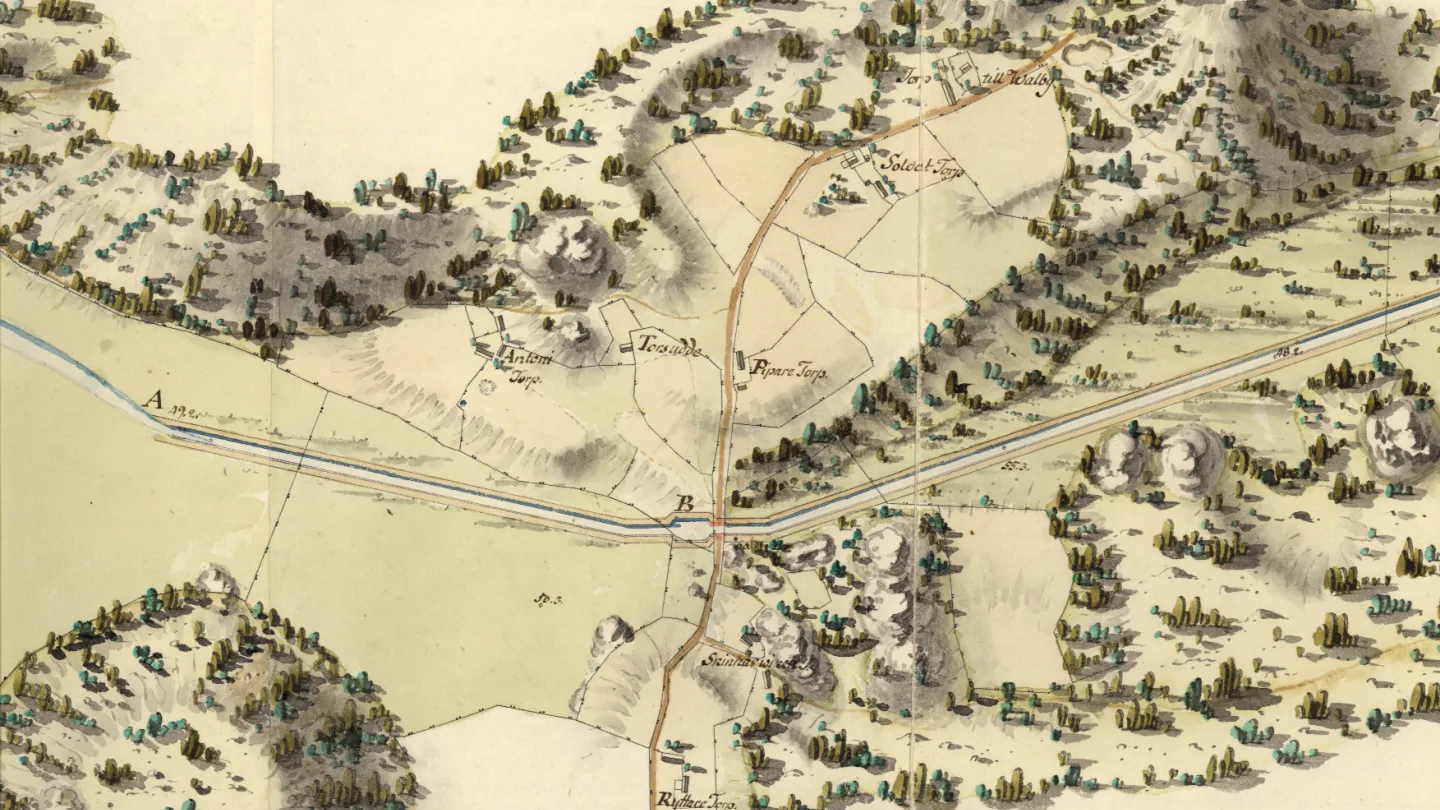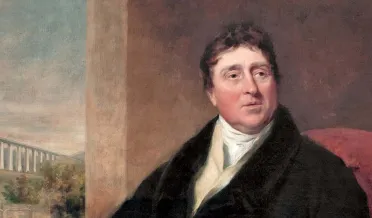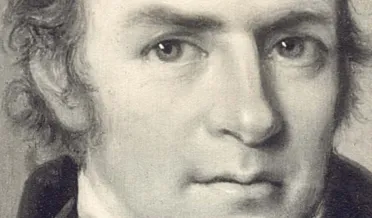
Historical questions - and answers
Baltzar von Platen tells the story of the Göta Canal.
"Every time I looked at the map of Sweden I wondered why there was no canal linking the seas to the east and to the west. A canal would facilitate trade and would be good for Sweden's defence.
As early as 1808 the British engineer Thomas Telford was in Sweden and helped me stake out the course of the Göta Canal. The task took us 21 days. But it was not until I received letters patent from the King in 1810 that I was able to start building in earnest."
We began the digging and blasting at Forsvik and Motala. Forsvik still has the oldest lock on the canal.
Many workmen were involved in the construction, and in 1812 there were 7,000 of us busy digging, blasting and removing earth.
In the end the men had dug 87.3 kilometres of canal, most of it by hand using wooden spades shod with iron. They had also done 7 million man-days of work, blasted away 200,000 cubic metres of rock, and carted away 8 million cubic metres of earth.
Most of my workmen were "establishment" soldiers, 58,000 of whom were drafted to the canal project at various times. There were also civilians, and a small party of 200 Russian deserters, working side by side with the soldiers. To keep the men in good spirits, 14 measures of schnapps were included in their weekly rations, since fingers and feet were liable to go numb in cold weather.
Motala Verkstad - Sweden's manufacturing industry
Sweden's manufacturing industry did not count for much before we began building the canal. We imported both a dredger and some levelling instruments from Great Britain, but what was absolutely invaluable was the know-how that the British shared with us.
This know-how helped us to start up Motala Verkstad, a workshop that in due course was to satisfy our needs. In time it became well known for its cast-iron technology and developed into the cradle of the Swedish manufacturing industry. Between them, the construction of the Göta Canal and Motala Verkstad provided training for a number of famous Swedish engineers, amongst them Nils and John Ericsson, Gottfried Kockum and C G Bolinder.
The inauguration of The Göta Canal
Our feelings when we were able formally to open the western section in 1822 were indescribable. I was honoured with the Order of the Seraphim by H.M. King Charles XIV John. Unfortunately, I was unable to attend when the eastern section was opened ten years later, because by that time I had been dead for three years.
But my canal lives on, as does my motto: "You can do what you want, and if you say you can't, then you don't really want to do it." In the year 2000 the Göta Canal was named the Swedish Construction of the Millennium by the journal Byggindustri, following a popular vote. The dream that I once nourished is realized, and today the canal is one of the largest and most important monuments to Sweden's cultural history.
How do you get the water level up again when you've emptied the lock so as to lower the boats down?
The natural flow from above serves to refill the lock. No water is pumped up. In Västergötland, Lake Viken tops up the canal, whilst in Östergötland the water comes from Lake Vättern. The canal also goes through other lakes that act as water reservoirs.
Why dig a canal when there were natural waterways nearby?
In the natural watercourses, too, they would have been obliged to have locks. It's much harder both to build and to repair locks if you have to dam up natural watercourses. Natural waterways are also subject to wide variations in water level, which creates problems, particularly at the locks.
Why did they dig the canal so crooked?
They followed the natural contour line, so that they could use one side as the "wall", meaning that they only needed to build a bank on one side of the canal.
How much water does a lock hold?
It varies slightly, because the depth isn't the same in all locks. The reason is that the height differences vary. A "normal" lock is customarily assumed to hold about 750 cubic metres of water. (1 m3 = 1,000 litres)
Visit our museums & exhibitions
Along the Göta canal there are several exhibitions that tell about different parts of its exciting history.
Feel free to visit them if you are interested in learning more!
Läs mer

